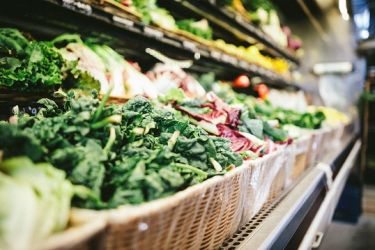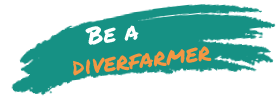The Diverfarming project has developed an economic assessment methodology which is integrated from the crop production in the field right through to the final value chain
The change in paradigm posed by the European H2020 Diverfarming project is based on the tools that crop diversification and the low-input management practices contribute to the European agricultural sector in the battle against the negative effects which threaten its very stability: degradation and loss of soils, drop in the biodiversity, or the low yields in harvests and their socioeconomic repercussions in the sector.
 The need to make diversification profitable and to value it in economic terms is crucial for the sector’s sustainability and for the farmers involved. For that reason, one Diverfarming working group (WP8) is tasked with the economic assessment at farm and value chain level, seeking to increase income and better organise the value chain in order to ensure the chosen crop system’s economic profitability.
The need to make diversification profitable and to value it in economic terms is crucial for the sector’s sustainability and for the farmers involved. For that reason, one Diverfarming working group (WP8) is tasked with the economic assessment at farm and value chain level, seeking to increase income and better organise the value chain in order to ensure the chosen crop system’s economic profitability.
The working group, composed by personnel from the Politécnica de Cartagena (Spain), Tucsia (Italy) and Portsmouth (England) universities; and led by the Finnish research institute Luke has developed a research method that enables the economic assessment of the different case studies that are trialled within the framework of the project and the future designs of diversification systems that the farmers adopt in their farms.
This document includes a series of guidelines which, from the data gathered from other working groups in the field trials, will enable the integration of the results obtained from the analysis of the interested parties, the economic analysis at farm level and at value chain level, and the study of the “non-market” costs and benefits.
Seeking to answer the question of ‘What do diversified crop systems provide?’, at farm level the efficiency of the diversification is studied taking into account parameters such as the harvest, use of fertilisers, pesticides, machinery, labour and gross profit margin. The measuring unit employed is the amount of resources used per hectare and the information is obtained through the collection sheets filled out by farmers and researchers. In addition to the total inputs at farm level, the method takes into account the choices of crop, diversification type and management per plot. Finally, at crop level data are gathered regarding crop yields considering amount and quality.
At the level of value chain, measurements will be taken on the increase in value added related with the crop, the logistics, and processing phases in the different ways the crops are used: food, animal feed or industrial products are all be measured. It will thus be possible to know in which cases the diversification practices contribute to changes in the value chain of the product or market share, the appearance of new markets or of more sustainable ways of selling.
Finally, with regard to the assessment of the “non-market” elements this implies the quantification of different social values that are not directed involved in the farm or the value chain. These are social and environmental parameters that affect both the market as well as human well-being. By approaching the ecosystem services, the benefits that the population obtains from nature are measured: these are the foodstuffs, the raw materials, carbon sequestration, pollination or tourism, and how the crop diversification would increase the amount of these benefits, taking into account that biodiversity is essential for the sustainability of the ecosystems.
Understanding the economic value of these services, as well as putting the economic comparison between conventional monocropping systems and the diversified systems at the forefront of the debate will help those responsible for managing agricultural and environmental policies to take decisions that are more appropriate for the current situation. It is in this field that this new methodology is expected to exert its influence.
Diverfarming is a project financed by the Horizon 2020 Programme of the European Commission, within the challenge of “Food Security, Sustainable Agriculture and Forestry, Marine, Maritime and Inland Water Research and the Bioeconomy”, which counts on the participation of the Universities of Cartagena and Córdoba (Spain), Tuscia (Italy), Exeter and Portsmouth (United Kingdom), Wageningen (Netherlands), Trier (Germany), Pecs (Hungary) and ETH Zurich (Switzerland), the research centres Consiglio per la ricerca in agricoltura e l'analisi dell'economia agraria (Italy), the Consejo Superior de Investigaciones Científicas (Spain) and the Natural Resources Institute LUKE (Finland), the agrarian organisation ASAJA, and the companies Casalasco and Barilla (Italy), Arento, Disfrimur Logística and Industrias David (Spain), Nieuw Bromo Van Tilburg and Ekoboerdeij de Lingehof (Netherlands), Weingut Dr. Frey (Germany), Nedel-Market KFT and Gere (Hungary) and Paavolan Kotijuustola and Polven Juustola (Finland)).










